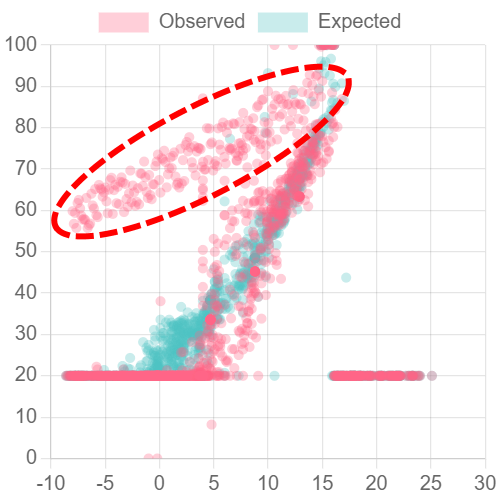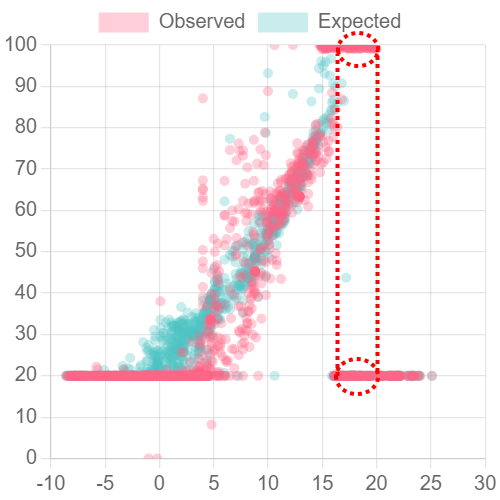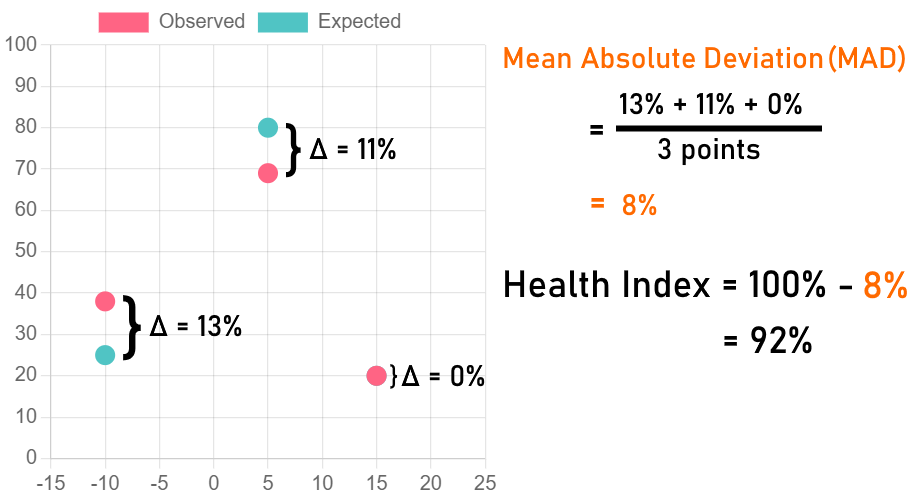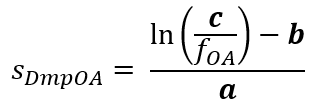EDC Building | Fault Detection & Diagnostics | State of Operation
State of Operation
The Outdoor Air Damper/Temperature chart lets you identify anomalous system-level operating states by plotting the observed and expected outdoor air damper position against outdoor air temperature. Per ASHRAE Guideline 36, healthy AHU operations should consist of four distinct operating states - mechanical heating, economizer, economizer with cooling, and mechanical cooling. Deviations from these states (i.e., operating in the incorrect state for the external conditions) can result from improper sequencing of events, inappropriate temperature or pressure limits, or inaccurate inputs from faulty sensors, and can lead to excessive energy use.

Scenario 1: Economizer in heating state ❌
Observed: The outdoor air damper is partially or fully open at very low outdoor air temperatures. This indicates that the economizer state is operating in place of mechanical heating.

Scenario 2: Premature mechanical cooling ❌
Observed: The outdoor air damper is fully open AND at its minimum position at the same outdoor air temperatures. This indicates a conflict between the economizer and economizer with cooling state.


 Low Health Index!
Turbo
Low Health Index!
Turbo
